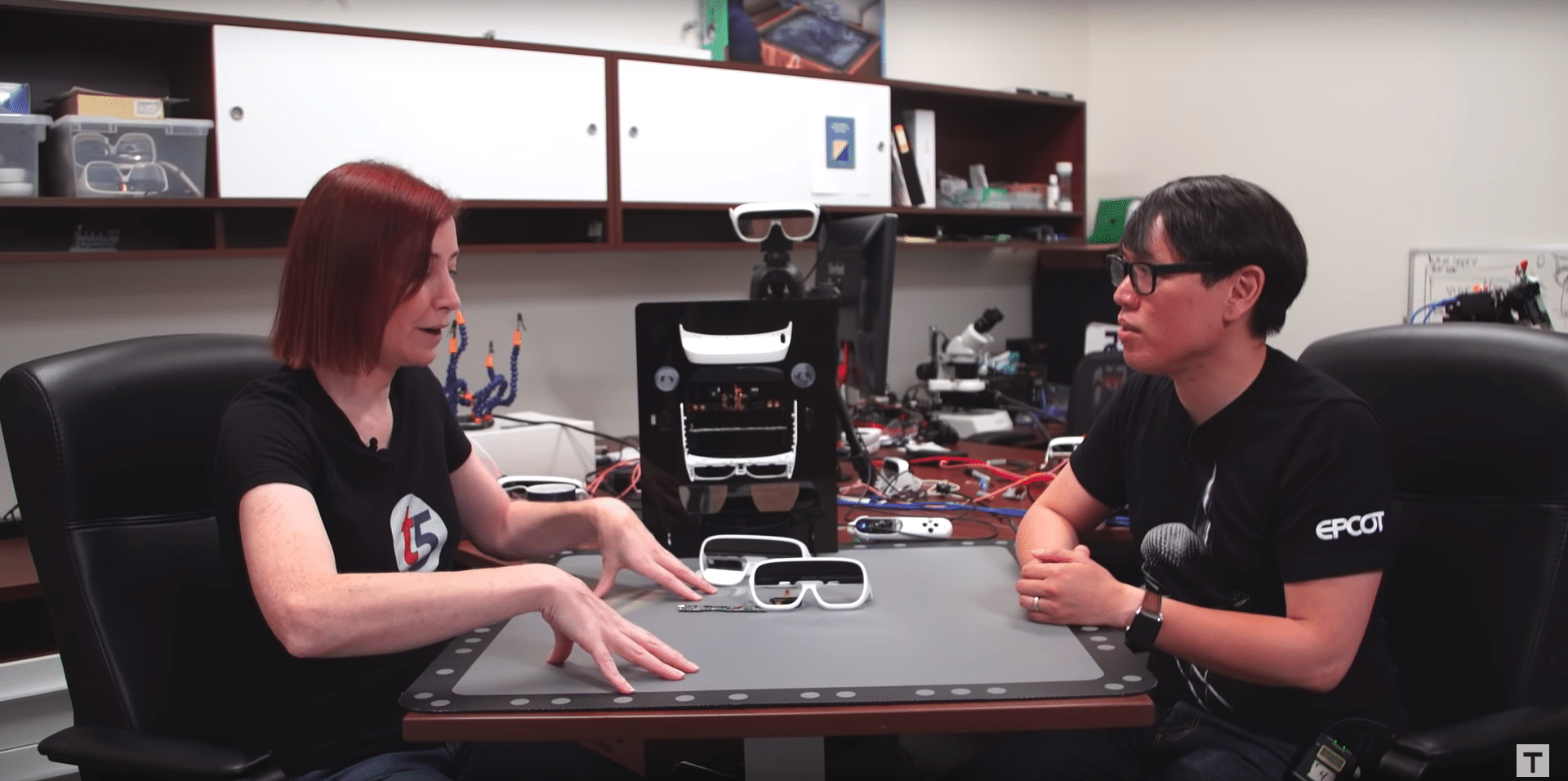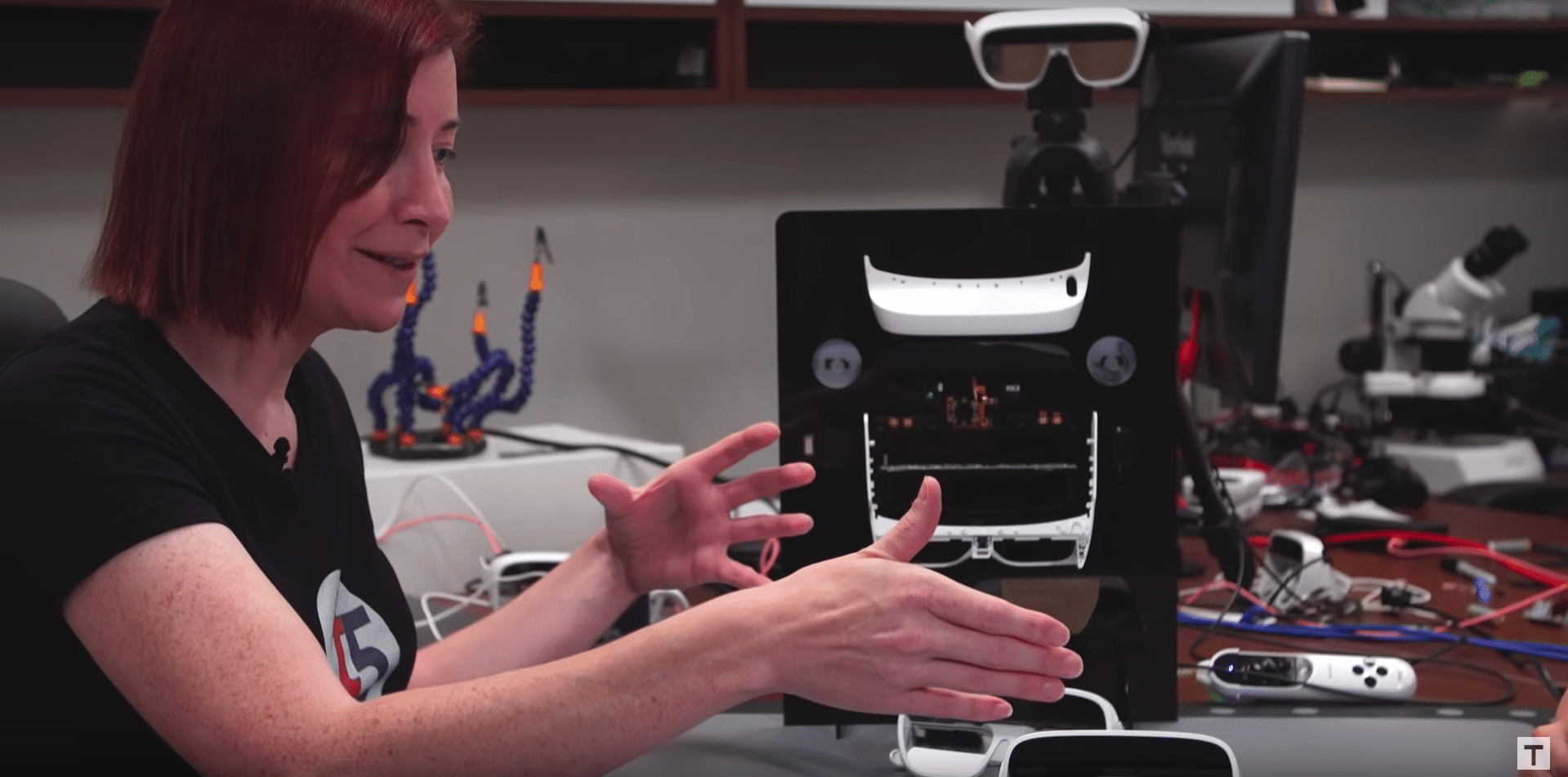
XR Talks is a series that features the best presentations and educational videos from the XR universe. It includes embedded video, as well as narrative analysis and top takeaways. Speakers’ opinions are their own.
An AR industry rally cry over the past few years has been the concept of “AR everywhere.” That principle embodies the AR cloud, which is of course critical to the future of AR. But when talking about the practicality of AR today, should it be less everywhere and more about AR somewhere?
This is a core principle behind Tilt Five. Its first product is kickstarter-backed AR gameboard that works in tandem with glasses and a wand. It also serves as an open platform for developers and game partners to build AR games that are stationary but high-quality and user-friendly.
“I love the systems that are ‘AR anywhere.’ Those are really cool but they have limitations… We decided to do AR somewhere,” said the always-insightful Tilt Five CEO Jeri Elsworth on the latest episode of Projections (video embedded at bottom). “We can just nail that and make it perfect.”
AR glasses often involve a tradeoff between several specs that are key considerations for “anywhere” operability, such as bulk versus performance. Tilt Five’s stationary approach conversely engenders design leeway to sidestep some of these common challenges.
“The system is super lightweight, it’s just 85 grams. It just folds up and slip it on,” said Ellsworth. “Our main objective is to have a system where you fold the game board out, slip the glasses on, and just get right into the fun… No calibrations, no complicated setup, no sensors in the room.
Of course, to achieve that level of user-friendliness and hardware efficiency is more complicated. Tilt Five’s proprietary technology utilizes a retro-reflective gameboard (see video above) which works with onboard glasses optics to achieve realistic AR interactions and depth.

This is what really makes it “AR somewhere” because AR glasses otherwise can’t practically utilize customized surfaces out in the world. But purpose-built for a stationary experience, Tilt Five was able to solve common AR challenges like vergence accommodation for variable focus.
“So our system is kind of unique compared to others… [It] actually projects out to a special game board which is called a retroreflector and that allows us to make the headset really high-performance, lightweight, super-wide field-of-view and super comfortable… Part of the system is it projects out of these silver lenses down to this retroreflector and it comes back to each user and that allows the focus of these pixels to be correct. So if I put my finger next to a virtual object, it’s in focus and that’s super unique to our system. A lot of other systems have a fixed focus and you can’t focus on real-world objects and virtual objects.”
Tilt Five’s go-to-market strategy is also importantly built on the platform approach mentioned earlier. This will be key to populating the experience with a range of games that tap into developer creativity. We’ll see everything from card games to tower defense to RPGs.

These will be developed on common platforms like PC and Android, and distributed on Steam and Google Play. So it has intelligently created the most accessible avenues for distribution. And it’s seeding the experience with a batch of launch titles, sort of like the first NES ‘black box‘ titles.
“Many of them will be on PC and Android. They just go to Google Play or Steam, download the game and you’re good to go… We have a bunch of action games that are going to be shipping with the system which are kind of party action games. So you have your friends sitting around the table, shooting blocks and trying to grief each other and do head-to-head. Then we have some solo play experiences. We have a racing game that’s very Mario Kart like, [with] a battle arena mode… You’re all in this arena, and it’s got these spinning discs and you try to shove your friend’s car off.”
Dungeons and Dragons-type games will also be fitting, as shown in the demo video above. In fact, Tilt Five has partnered with Fantasy Grounds to port its licensed titles, which represents a key partnering aspect of its go-to-market strategy, in addition to open community development.
Importantly, the Fantasy Grounds partnership brings in an existing and avid user base. It will also operate across platforms so Tilt Five users can play with non-Tilt Five users. This is smart to allay compatibility barriers, while also exposing Tilt Five to potential converts on other systems.
As for a launch timeline, the project is still active on Kickstarter until October 28. In fact, it just broke the $1 million mark. From there, it plans to enter a beta testing process in the first quarter of 2020, then start shipping units to Kickstarter backers in Q2. Then it’s off to the races.
See the full interview below.
For deeper XR data and intelligence, join ARtillery PRO and subscribe to the free AR Insider Weekly newsletter.
Disclosure: AR Insider has no financial stake in the companies mentioned in this post, nor received payment for its production. Disclosure and ethics policy can be seen here.
Header image credit: Tilt Five
